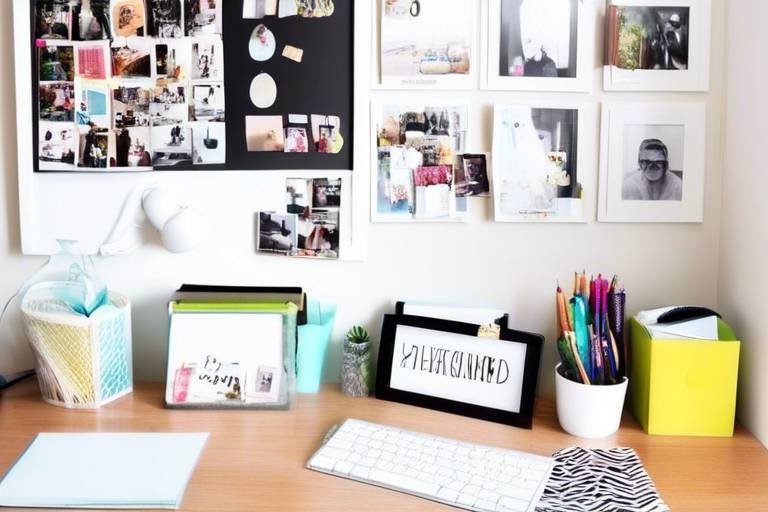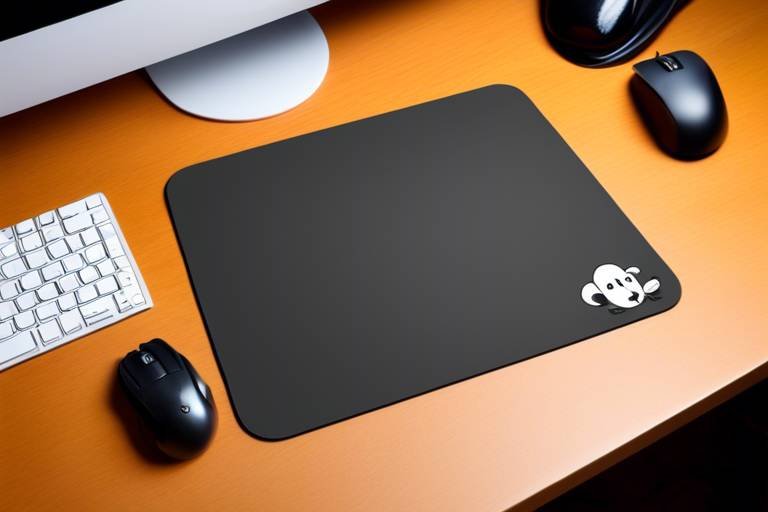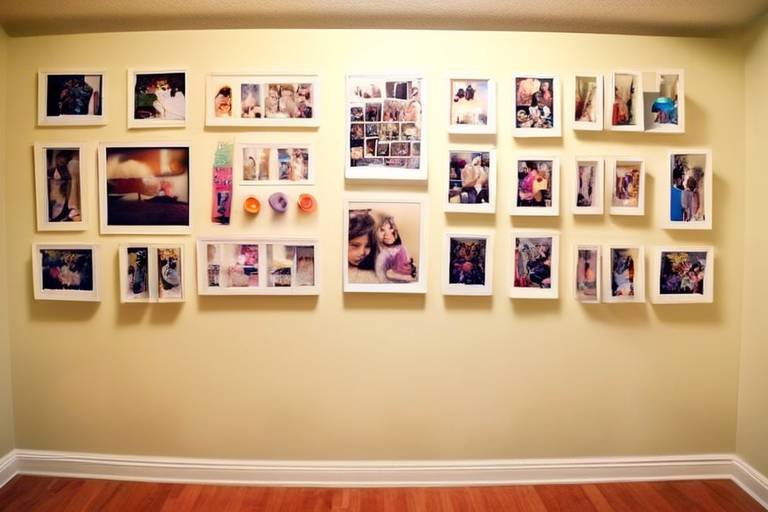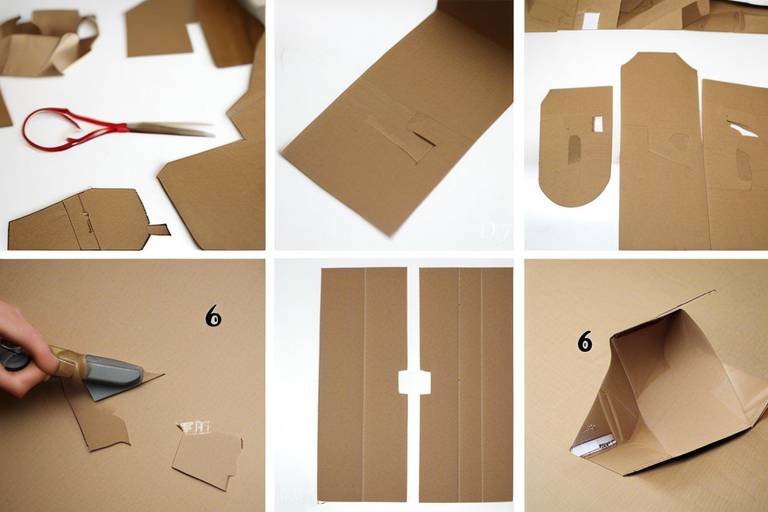10 Easy Woodworking Projects for Beginners
Are you ready to embark on your woodworking journey but not sure where to start? Fear not, as we have compiled a list of 10 easy woodworking projects tailored for beginners like you. These projects are designed to be simple yet rewarding, allowing you to learn essential woodworking skills while creating practical and beautiful items for your home.
From crafting wooden coasters to building a jewelry organizer, each project introduces you to fundamental techniques such as measuring, cutting, sanding, and finishing. As you progress through these projects, you will gain confidence in your abilities and develop a solid foundation for more advanced woodworking endeavors.
One of the key benefits of starting with these beginner-friendly projects is that they require minimal tools and materials, making them accessible to woodworking novices. Whether you are looking to spruce up your living space with floating shelves or add a personal touch to your kitchen with handmade wooden utensils, these projects offer a perfect starting point for your woodworking journey.
Additionally, by completing these projects, you will not only hone your woodworking skills but also unleash your creativity and discover the joy of working with your hands. Each item you create will be a testament to your newfound abilities and a source of pride as you showcase your craftsmanship to family and friends.
So, roll up your sleeves, grab your tools, and dive into these 10 easy woodworking projects for beginners. Let the sawdust fly and the creativity flow as you embark on a fulfilling and exciting woodworking adventure!

1. Wooden Coasters
Wooden coasters are a fantastic beginner woodworking project that combines both functionality and creativity. By crafting stylish wooden coasters, you not only protect your surfaces but also get to practice essential woodworking techniques in a small and manageable size. This project is an excellent introduction to measuring, cutting, sanding, and finishing, laying a solid foundation for your woodworking journey.
When creating wooden coasters, you have the opportunity to experiment with different wood types, designs, and finishes, allowing you to personalize each piece to suit your style. Whether you prefer a natural wood look or want to add a pop of color with stains or paints, wooden coasters are a versatile project that can showcase your creativity.
To enhance the functionality of your wooden coasters, consider adding protective elements such as cork or felt to the bottom to prevent scratches on your furniture. Additionally, you can apply a durable finish like polyurethane to ensure longevity and easy maintenance of your coasters.
As you embark on this woodworking project, remember that precision and attention to detail are key. Practice accurate measuring and cutting to ensure that your coasters are uniform in size and shape. Sanding plays a crucial role in achieving a smooth and professional finish, so take your time to sand each piece thoroughly.
Wooden coasters make for excellent gifts or additions to your own home decor. Whether you create a matching set or mix and match different designs, these coasters are both practical and aesthetically pleasing. Embrace the creative process, experiment with patterns and colors, and enjoy the satisfaction of completing a woodworking project that is both useful and visually appealing.

2. Floating Shelves
Floating shelves are a versatile and stylish addition to any living space. These shelves appear to "float" on the wall, giving a modern and minimalistic touch to your decor. When creating floating shelves as a woodworking project, you not only enhance the aesthetics of your home but also learn valuable skills in mounting and finishing.
One key aspect of building floating shelves is ensuring they are securely mounted to the wall. This project teaches you how to find and install wall studs for maximum support. By mastering this technique, you can confidently display your favorite items without worrying about the shelves coming loose.
Moreover, floating shelves provide an excellent opportunity to experiment with different wood finishes and textures. You can customize the shelves to match your existing furniture or create a striking contrast for a bold statement piece. This project allows you to explore various staining and sealing techniques to achieve the desired look.
Additionally, the process of constructing floating shelves involves precise measurements and cuts to ensure a seamless fit against the wall. By honing your woodworking skills in accuracy and attention to detail, you can create professional-looking shelves that add both functionality and beauty to your home.
Imagine the satisfaction of showcasing your favorite books, plants, or decor items on shelves that you crafted with your own hands. Floating shelves not only serve a practical purpose by providing storage and display space but also serve as a testament to your growing expertise in woodworking.

3. Picture Frames
When it comes to woodworking projects for beginners, crafting personalized picture frames is a fantastic way to showcase your creativity and add a touch of elegance to your home decor. Picture frames not only hold cherished memories but also serve as decorative pieces that enhance the overall aesthetic of a room.
Creating your own picture frames allows you to tailor the design to suit your style and the photos or artwork you wish to display. Whether you prefer a rustic, modern, or vintage look, woodworking offers endless possibilities for customization.
One of the key aspects of making picture frames is mastering the art of mitered corners. This technique involves cutting the frame pieces at precise angles to create seamless joints that give a professional finish to your project. While it may seem challenging at first, with practice and attention to detail, you can achieve clean and tight corners that elevate the overall appearance of the frame.
Aside from the corners, assembling the frame requires careful alignment and securing of the pieces to ensure stability and durability. Whether you choose to use nails, screws, or wood glue, each method has its own benefits and considerations that can impact the final look and strength of the frame.
Furthermore, finishing techniques play a crucial role in enhancing the visual appeal of the picture frame. From staining and painting to varnishing or adding decorative elements, the finish can transform a simple wooden frame into a work of art that complements your photos or artwork beautifully.
As a beginner woodworking project, making picture frames provides a practical yet creative outlet for honing your skills and experimenting with different woodworking techniques. Whether you decide to create a single frame as a standalone piece or a set of frames for a gallery wall, the process of designing and building picture frames is both rewarding and enjoyable.

4. Wooden Planters
Wooden planters are a fantastic woodworking project for beginners looking to add a touch of nature to their living spaces. These simple yet elegant containers not only enhance the aesthetic appeal of a room but also provide a practical way to showcase your favorite plants. By learning basic box construction techniques and finishing methods, you can create custom planters that perfectly suit your style and preferences.
When crafting wooden planters, you have the opportunity to experiment with different wood types, sizes, and designs to create unique pieces that complement your home decor. Whether you prefer a rustic, natural look or a more polished finish, wooden planters offer versatility in both style and functionality. Additionally, building planters allows you to practice essential woodworking skills such as measuring, cutting, and assembling, setting a solid foundation for future projects.
One of the key advantages of making wooden planters is the satisfaction of nurturing plant life within a container you crafted yourself. These planters can be customized to accommodate various types of plants, from small succulents to larger flowers or herbs. By incorporating drainage holes and proper sealing, you can ensure the longevity of both your plants and the wooden planter itself, creating a harmonious environment for growth.
Furthermore, wooden planters can serve as thoughtful gifts for friends and family, adding a personal touch to special occasions. Whether you choose to stain, paint, or leave the wood natural, the possibilities for customization are endless. From indoor herb gardens to outdoor floral displays, wooden planters offer a creative outlet for expressing your love for woodworking and nature simultaneously.

5. Simple Bookshelf
Are you looking to add a touch of organization to your living space? Building a simple bookshelf can be the perfect project for beginners eager to expand their woodworking skills. This project allows you to create a functional piece of furniture while learning the basics of constructing a structure with shelves. Whether you're a book lover or simply want to display your favorite items, a DIY bookshelf can be a rewarding and practical addition to your home.

6. Serving Tray
Creating a serving tray is a fantastic woodworking project that combines both functionality and style. Imagine serving your guests with a beautifully crafted tray that you made with your own hands - it adds a personal touch to any gathering. This project involves a few key steps to bring your serving tray to life.
First, you'll need to select the type of wood you want to use for your tray. Consider the durability and aesthetics of different wood species to find the perfect match for your design. Whether you prefer a rich mahogany or a light oak, the choice of wood can greatly impact the final look of your serving tray.
Next, you'll dive into the process of cutting the wood to the desired dimensions. Precision is key here, as you want your tray to have clean lines and a professional finish. Measure twice, cut once - a fundamental rule in woodworking that ensures your pieces fit together seamlessly.
Assembling the serving tray involves joining the cut pieces together to form the base and sides. This step requires attention to detail to ensure everything aligns correctly. You may choose to use wood glue, nails, or screws to secure the components, depending on your preferred method of construction.
One of the highlights of making a serving tray is adding the finishing touches. Sanding the surfaces smooth and applying a protective finish not only enhances the appearance but also prolongs the lifespan of your creation. Consider staining the wood for a rich color or keeping it natural for a more rustic feel.
Lastly, don't forget to incorporate handles into your serving tray design. Handles not only make it easier to transport the tray but also serve as decorative elements. You can choose from various handle styles, from sleek metal pulls to integrated wooden grips, adding a personal flair to your project.

7. Wooden Utensils
Wooden utensils are not only practical tools in the kitchen but also beautiful additions to your culinary experience. Crafting your own wooden utensils allows you to infuse a personal touch into your cooking routine. By shaping and finishing wood, you can create functional tools that are unique to your kitchen setup. Whether it's a wooden spoon, spatula, or serving fork, each utensil can be customized to fit your needs and style.
When working on wooden utensils, it's essential to choose the right type of wood that is safe for food contact and durable enough to withstand frequent use. Hardwoods like maple, cherry, or walnut are popular choices due to their strength and attractive grain patterns. These woods are also relatively easy to work with, making them ideal for beginners in woodworking.
One of the key aspects of crafting wooden utensils is the process of shaping the wood into the desired form. Whether you prefer a classic spoon shape or a more modern design, precision cutting and sanding are crucial to achieving a smooth and comfortable finish. Paying attention to details such as the handle shape and overall ergonomics can enhance both the aesthetic appeal and functionality of the utensil.
After shaping the wood, finishing techniques play a vital role in protecting the utensil from moisture and food stains. Food-safe finishes like mineral oil or beeswax not only provide a protective layer but also enhance the natural beauty of the wood. Properly finishing your wooden utensils ensures longevity and ease of maintenance, allowing you to enjoy using them for years to come.
Moreover, crafting wooden utensils can be a rewarding and environmentally friendly alternative to using plastic or metal tools in the kitchen. Wood is a renewable resource that adds warmth and character to your cooking space. By making your own wooden utensils, you contribute to sustainability efforts and reduce your reliance on disposable kitchen items.
Embrace the art of woodworking by creating your own set of wooden utensils. From stirring sauces to serving salads, these handcrafted tools will not only elevate your cooking experience but also serve as unique pieces of functional art in your kitchen.

8. Jewelry Organizer
Are you tired of untangling necklaces or losing earrings in a messy drawer? It's time to craft a jewelry organizer that not only keeps your accessories tidy but also adds a touch of elegance to your space. This project is a perfect blend of functionality and aesthetics, guiding you through creating compartments, hanging hooks, and even incorporating a mirror for added convenience.

9. Wooden Toy Blocks
Wooden toy blocks are not just simple playthings; they are tools for imagination and creativity. These timeless pieces of childhood are not only entertaining but also educational, promoting cognitive development and spatial awareness in children. Crafting wooden toy blocks can be a rewarding experience, allowing you to create personalized gifts or decorative items that stand the test of time.
When making wooden toy blocks, precision is key. Each block must be cut to the exact dimensions to ensure they fit together seamlessly, promoting stability and durability in the final product. Sanding the edges smooth not only enhances the aesthetic appeal but also prevents splinters, making the blocks safe for children to handle and play with.
Wooden toy blocks come in various shapes and sizes, offering endless possibilities for creative construction. From simple stacking to intricate building designs, these blocks encourage problem-solving skills and spatial reasoning in children, fostering a sense of accomplishment as they bring their ideas to life.
By using different types of wood, you can introduce textures and colors to the wooden toy blocks, adding visual interest and sensory stimulation for young minds. Incorporating natural finishes like beeswax or food-grade oils not only protects the wood but also provides a tactile experience for children as they explore the different surfaces of the blocks.
Building wooden toy blocks is a hands-on activity that promotes bonding and interaction between parents and children. Working together to create custom sets of blocks strengthens relationships and creates lasting memories, fostering a sense of collaboration and shared achievement.
Whether you are crafting wooden toy blocks for playtime or as decorative elements, the process of woodworking offers a therapeutic and meditative experience. Each cut, sand, and finish is a deliberate step towards a final product that embodies craftsmanship and attention to detail, reflecting the dedication and passion you put into your creations.
Frequently Asked Questions
- Q: What tools do I need for these woodworking projects?
A: The tools needed for these woodworking projects typically include a saw, hammer, measuring tape, sandpaper, wood glue, and a drill. Each project may have specific tool requirements mentioned in its instructions.
- Q: Are these woodworking projects suitable for complete beginners?
A: Yes, these woodworking projects are designed with beginners in mind. They offer a great opportunity to learn basic woodworking skills and gain confidence in working with wood.
- Q: Can I customize the designs of these projects?
A: Absolutely! Feel free to add your personal touch to the designs. You can experiment with different finishes, colors, and sizes to make the projects uniquely yours.
- Q: How long does it take to complete these woodworking projects?
A: The time taken to complete each project may vary based on your skill level and the complexity of the design. Generally, these projects can be completed within a few hours to a couple of days.
- Q: Do I need prior woodworking experience to attempt these projects?
A: No prior woodworking experience is required. These projects are perfect for beginners who are eager to learn and practice woodworking skills in a fun and rewarding way.



















